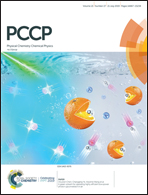|
Autors/es
Crespo, E.A.; Silva, L.P.; Lloret, J.O.; Carvalho, P.J.; Vega, L.F.; Llovell, F. ; Coutinho, J.A.P. ; Coutinho, J.A.P.
|
Abstract
Given the recent boom of applications for deep eutectic solvents (DES), there is a need for robust and accurate thermodynamic models that are able to describe them. Recent works have used molecular-based equations of state, derived from the Statistical Associating Fluid Theory (SAFT), to model DES due to their ability to explicitly account for hydrogen bonding, which is thought to govern the formation of a DES. However, the application of these association models to DES is a non-trivial task, because pure fluid data for several DES precursors are not available to be used in the model parameterization. The alternative parameterization procedures currently employed have evident flaws including the use of oversimplified association schemes, lack of transferability, inability to provide fundamental solid–liquid equilibrium data, and an overall poor accuracy. This work highlights the disadvantages of the current approaches while providing a novel methodology for the development of coarse-grained models applicable to DES. By proposing a more realistic association scheme and regressing the model parameters from experimental data that can be easily measured for a representative DES, a new coarse-grained model for [Ch]Cl, the most used DES precursor, was developed for soft-SAFT. The good performance and versatility of the new model were then successfully demonstrated through the modelling of a wide variety of [Ch]Cl-based DES, providing accurate descriptions of densities, vapor–liquid equilibria and solid–liquid equilibria data, for both binary and ternary systems. Furthermore, the novel approach can easily be applied to other SAFT-type models and extended to other solid DES precursors such as urea.
|

WoS
Scopus
Altmetrics
  
|
|
Publicació
Physical Chemistry Chemical Physics, 2019, vol. 21, no. 27, p. 15046-15061
|
